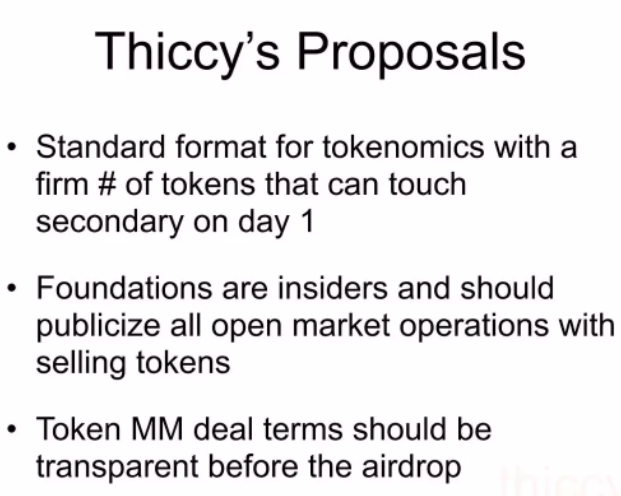Market Making or Speculation? An Analysis of the Specific Mechanisms and Potential Risks of Market Makers (MM)
Source: https://twitter.com/thiccythot_/status/1643753971172151298?s=20
Author: Alex
Compiled by: Deep Tide TechFlow
Today's digital asset market has evolved into a massive global industry, attracting an increasing number of investors and institutions. However, as the market expands and the number of participants grows, the stability and fairness of the market have become increasingly important issues.
Therefore, the author introduces the specific mechanisms of token market makers (MM) and the potential for violations based on recent Arbitrum events, while also offering personal views on the need for more disclosure in projects within this field.
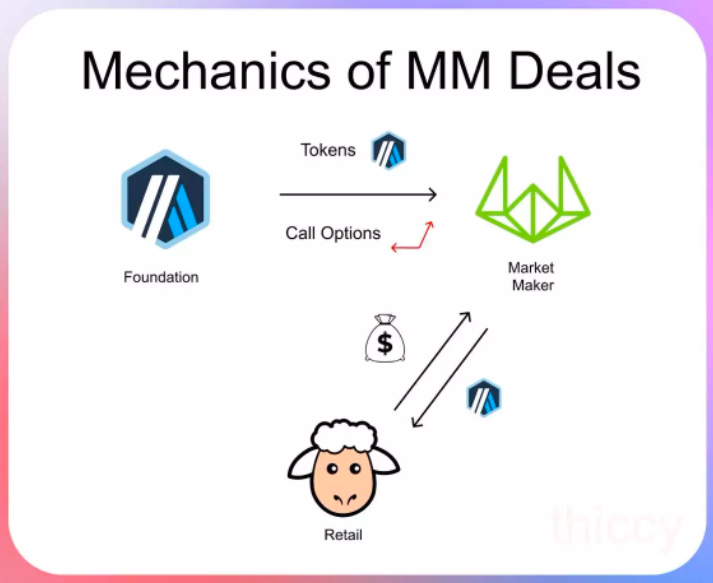
Why do current crypto projects have market makers (MM) trading?
In the past, projects typically promoted liquidity by providing tokens to on-chain pools as incentives. Now, they incentivize complex market makers to provide liquidity on centralized exchanges (CEX).
This shift aims to improve the efficiency of price discovery and reduce costs for all participants.
On CEX, due to greater liquidity, price discovery is more effective. Additionally, market makers can offer better buy and sell prices for buyers and sellers, making the market more attractive.
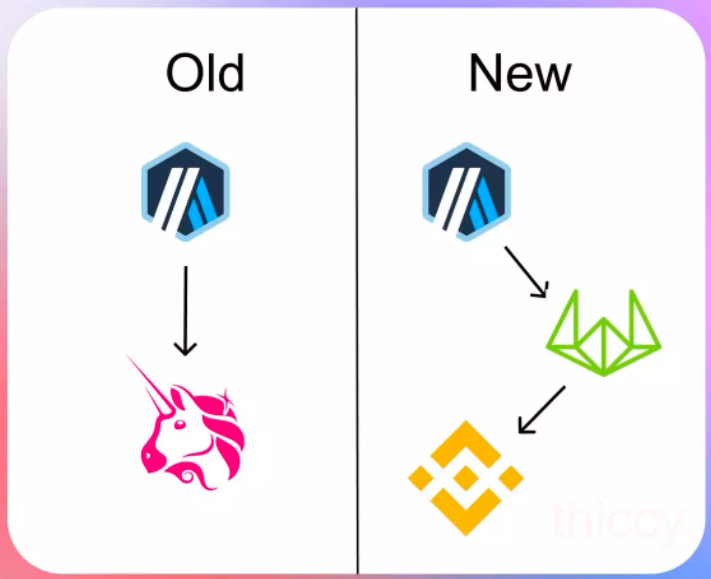
How do crypto projects incentivize market makers?
Typically, projects provide market makers with a one-year token loan, during which they grant zero-cost subscription options for the tokens. Specifically, projects lend tokens to market makers (usually 3-5) and require them to guarantee market size and spreads during the loan period.
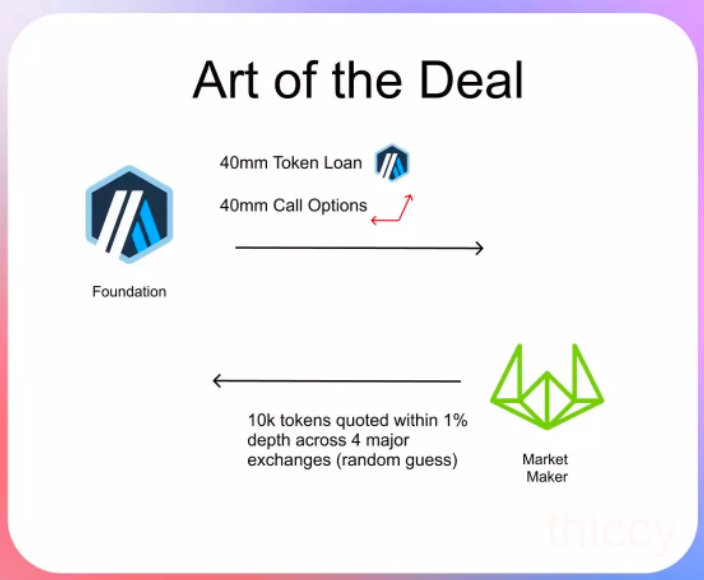
Why do projects lend tokens to market makers?
Market makers need token loans to ensure they have enough inventory to meet potential excessive buying demand.
At the same time, market makers need to conduct effective borrowing operations to offset excessive buyer demand when necessary.
Token loans typically have zero or very low interest rates. While market makers need tokens to provide liquidity, they do not want to bear significant borrowing costs.
Thus, token loans are a common incentive mechanism that provides market makers with the necessary tokens to support market liquidity while also reducing the burden of costs on market makers.
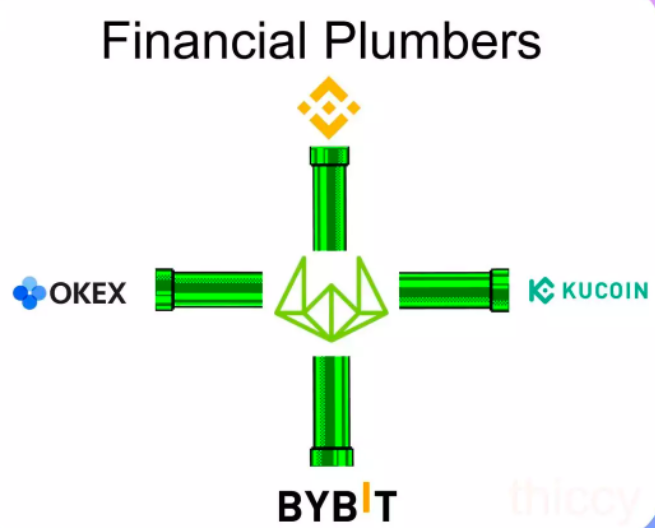
Why provide market makers with call options?
Market makers need to pay a price to provide liquidity services. Project teams typically choose to use tokens instead of cash to pay this price because tokens are more liquid and operable.
However, to prevent market makers from immediately selling tokens and affecting market prices and investors' interests, project teams usually grant market makers subscription options to achieve incentive alignment. If the token price rises, market makers can earn more profits, while project teams can also benefit from the appreciation of the tokens.
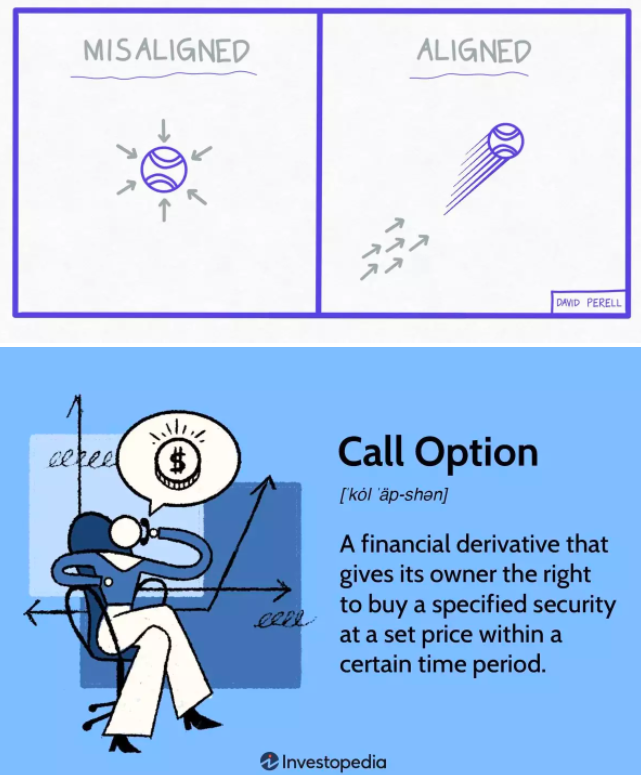
How to determine the exercise price of call options if the token has not yet started trading?
In this case, project teams choose to set the exercise price of the call options at a premium of 50% - 100% of the index price. Since the index price can usually be determined on-chain or in other markets, the exercise price does not need to be known at the time the transaction is made.
This method of setting the exercise price for call options provides a certain degree of flexibility for both market makers and project teams and can help reduce trading risks. If the token price is above the exercise price, market makers can earn profit from the price difference; if the token price is below the exercise price, market makers can choose not to exercise the call option and forgo the profit.
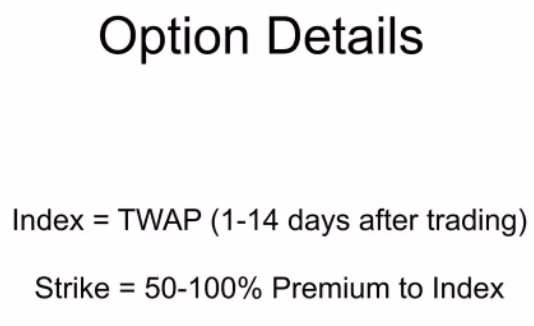
The mechanisms related to token market makers are not inherently malicious. The problem lies in the fact that these mechanisms are often not disclosed to retail investors.
This makes open market participants feel unfair. They may not be aware of important information regarding token prices and liquidity, leading to losses in trading. If project teams or market makers clearly communicate this information to investors, the entire market can become more transparent and fair, thereby reducing investor losses and increasing the confidence of market participants.
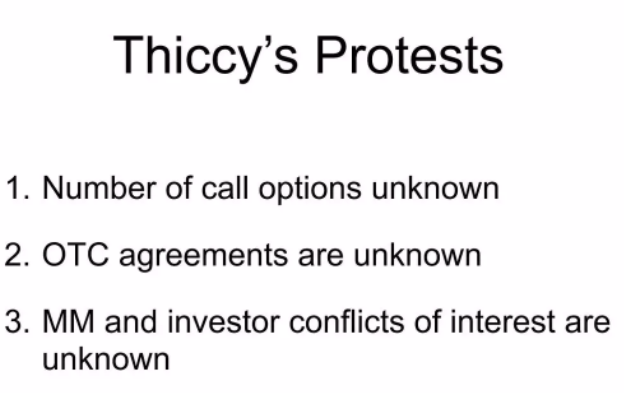
Let's take a look at the recent Arbitrum events.
The document did not mention the trading terms and conditions of token market makers, making it difficult for investors to understand the actions of market makers and their potential impacts.
More importantly, the document also did not clarify whether Wintermute (the market maker) is an investor in Arbitrum, which could lead to conflicts of interest and moral hazards.
Retail investors made investment decisions based on the assumption that the only supply of 1.275 billion tokens mentioned in the document was in the secondary market. However, this was not the case, leading to some unexpected situations.
1. The number of call options is unknown
These call options essentially increase the circulating supply of tokens, thereby affecting token prices and liquidity.
Market makers need to sell tokens to hedge the Delta of the call options to maintain market neutrality. In this process, market makers sold a large number of tokens, effectively increasing the supply of tokens, but this data was not disclosed to investors in a timely manner.
It is reported that Wintermute's (the market maker) hedging trades added at least 16 million tokens to the secondary market, which is one of the reasons for the instability of token supply and price fluctuations.
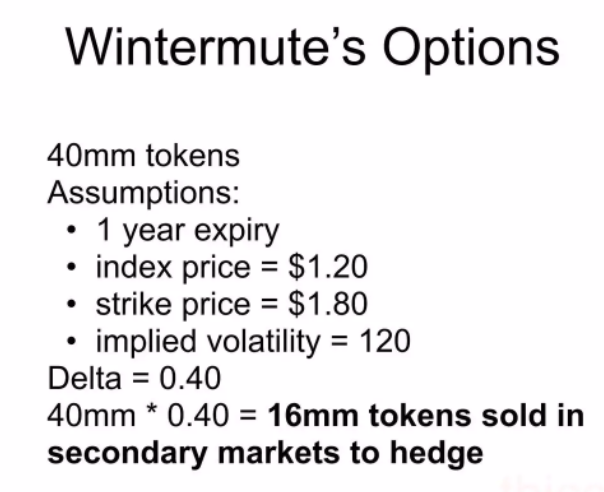
2. OTC trading terms are unknown
Another concerning issue is that the foundation sold $10 million worth of tokens through an over-the-counter transaction with Wintermute (the market maker).
However, these operations were not disclosed to retail investors before the transaction occurred. In fact, investors only learned about this information after the transaction was completed.
At the same time, the original document did not mention whether the foundation had the right to sell tokens in such a short time frame.
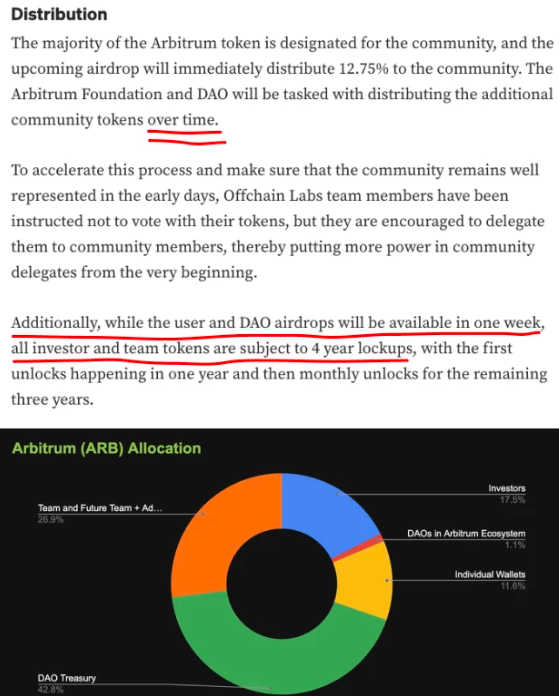
3. The positioning of investors and market makers is unclear
In the Arbitrum event, it is unclear whether Wintermute (the market maker) is an investor in the project.
Especially for retail investors, understanding the relationship between investors and market makers is very important. They should clearly understand the role and profit sources of market makers in the market to accurately assess market risks and opportunities.
Here is a famous strategy from Alameda:

Retail investors suffered a double blow in this event, first being forced to accept additional tokens being passed onto them without notification.
Then, Arbitrum also attempted to secretly implement a false decentralization plan, which was ultimately exposed, leading to a drop in token prices.
There is a reason why IPOs in Tradfi require prospectuses to clearly outline the following:
The number of shares issued;
The initial public offering price;
The underwriters participating in the transaction;
The profits and dividends received by the underwriters.
This information is very important for investors as it provides comprehensive and transparent information about the company and the stock, helping investors make informed investment decisions.
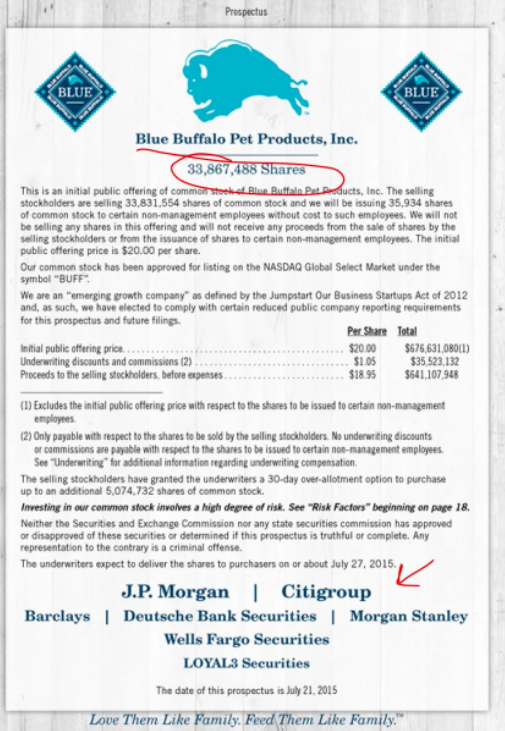
Of course, another reason is the existence of insider trading laws. Participants holding a large number of tokens or possessing insider information are required to publicly disclose their operations in the secondary market. This helps protect the fairness and transparency of the market.
However, in the cryptocurrency market, there are sometimes non-compliant operations, such as flooding the market with a large number of tokens. These operations can have adverse effects on the market and harm investors, which is intolerable.
For the development of the token market, transparency and fairness are very important. Last week's events caused significant damage to the industry, indicating that existing rules and mechanisms have some shortcomings and loopholes.
In the current token market, many investors and traders face issues of information asymmetry and market uncertainty. This situation not only affects investors' confidence and interests but may also hinder the overall development and innovation of the market.
Therefore, we need stricter regulations and more transparent market rules to promote market stability and reliability. Only by enhancing the transparency and fairness of the market can we attract more investors and participants to join this industry.
I believe we can collectively establish a social contract that requires future projects to provide more transparent and public information and rules.
As investors and participants, we can take measures to achieve this goal. For example, not purchasing governance tokens that do not provide sufficient information and disclosures; or safeguarding the fairness and transparency of the market through more research, investigation, and oversight.
At the same time, token issuers and market makers also need to take responsibility by providing more information and disclosures to meet the needs of investors and the market. Only through cooperation and joint efforts can we make the token market safer, fairer, and more reliable, thereby creating more opportunities and benefits for all market participants.
